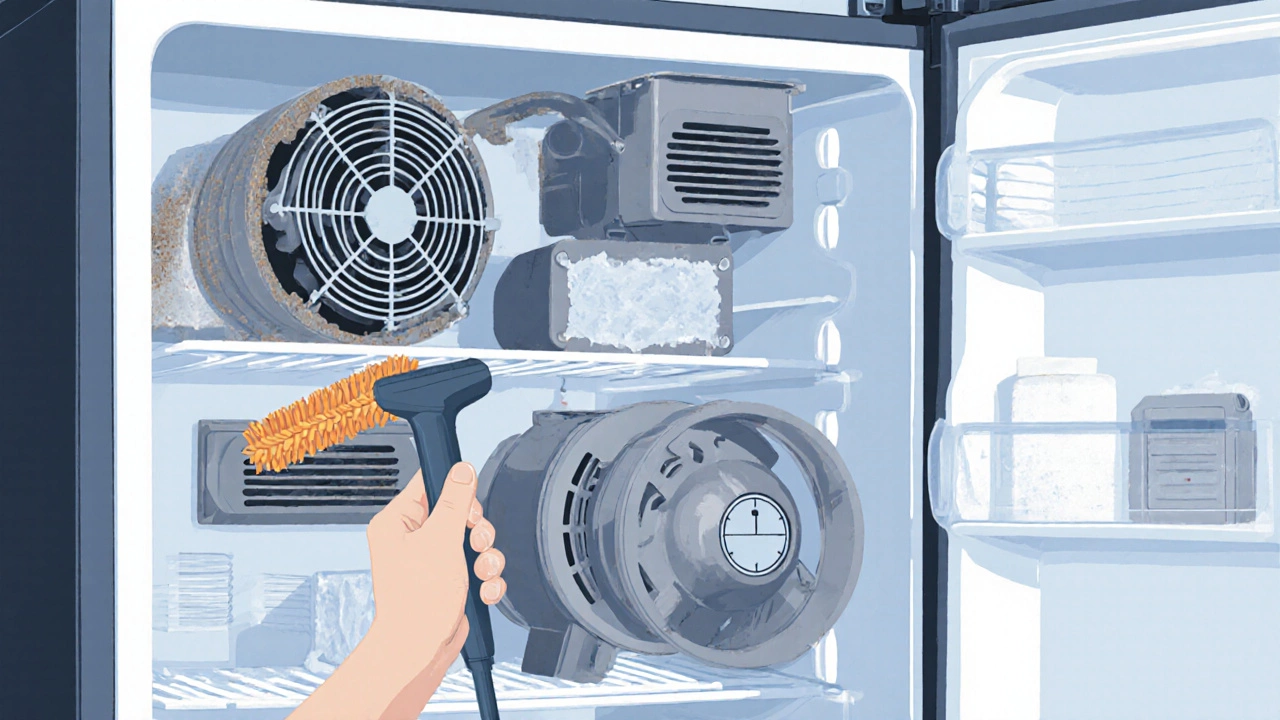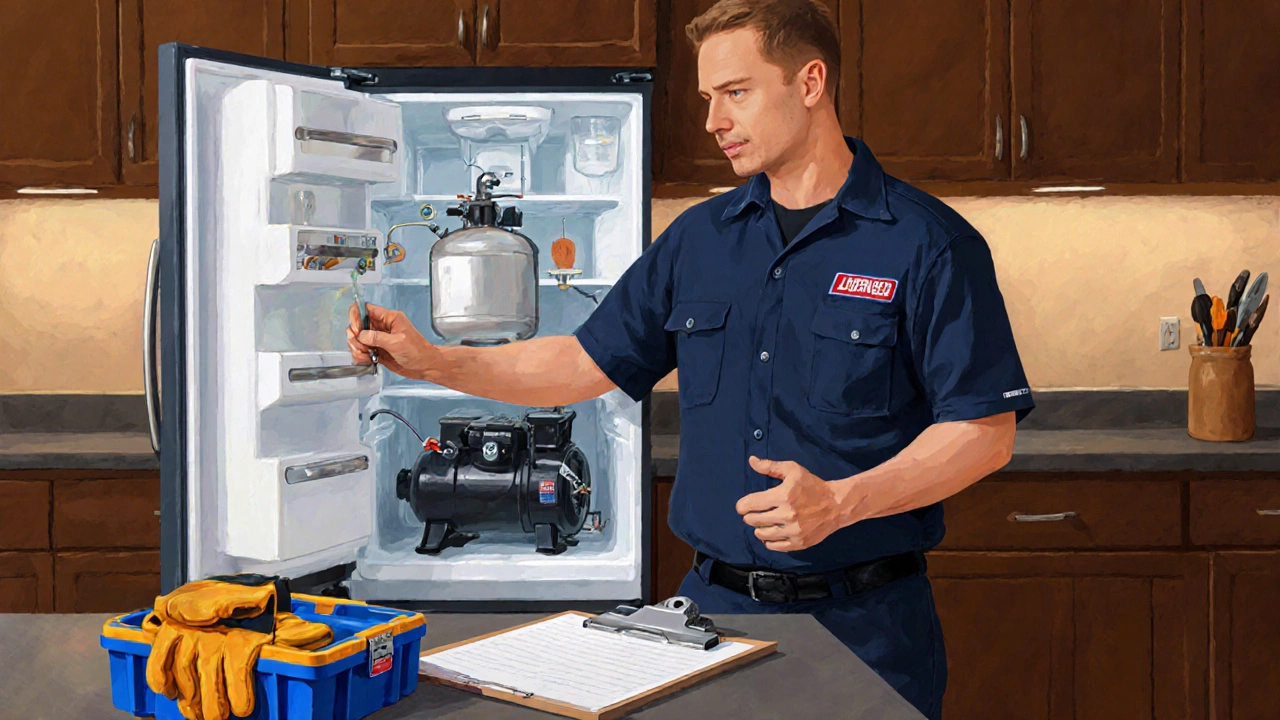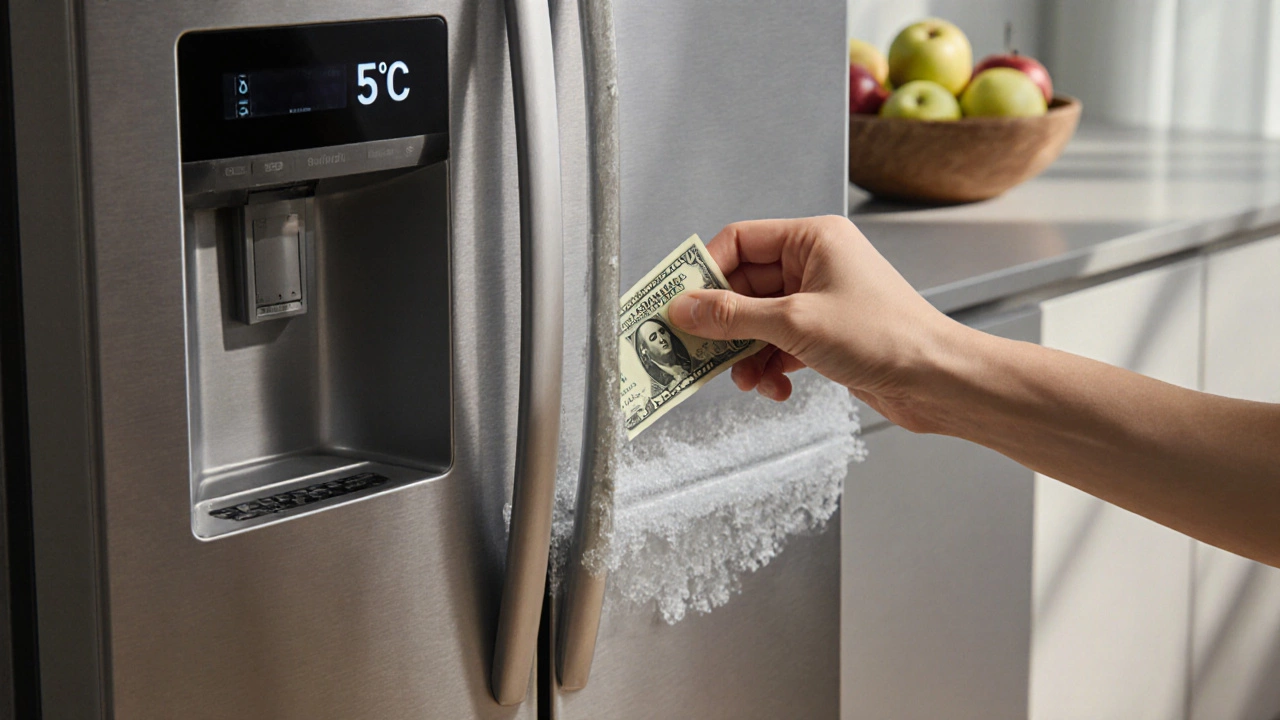Refrigerator Problem Checker
Identify Your Refrigerator Issue
Select the symptoms you're experiencing to get diagnosis and recommended next steps.
Select symptoms and click "Check Diagnosis" to see your results.
When your Refrigerator a kitchen appliance that keeps food cold using a sealed cooling system starts acting up, it’s easy to chalk it up to a minor glitch. But a series of small problems can be a warning that the unit is on its way out. Knowing the exact signs saves you time, money, and the disappointment of a warm grocery haul.
Key Takeaways
- Temperature drift, excess frost, water leaks, and odd noises are the most reliable warning signs.
- A quick visual and auditory check can often pinpoint the faulty component.
- Some problems, like a failing Compressor the heart of the cooling cycle that compresses refrigerant gas, require a professional.
- Regular cleaning of coils and door seals prolongs life by up to 30%.
- Acting early on refrigerator signs of failure can avoid costly emergency repairs.
Common Signs Your Refrigerator Is Failing
1. Not cooling properly
If the freezer stays above -18°C (0°F) and the fridge is warmer than 4°C (40°F), the cooling circuit is struggling. A faulty Thermostat the temperature sensor that tells the system when to turn the compressor on or off or a clogged evaporator coil can cause this.
2. Frost or ice buildup
When you notice a thick layer of frost on the back wall of the freezer, the automatic defrost cycle has likely failed. The Defrost timer a timer that triggers periodic heating to melt frost may be stuck, leaving the Evaporator coil the set of tubes that absorb heat from the freezer compartment coated in ice.
3. Loud humming, rattling, or clicking noises
Normal operation makes a low hum, but any grinding or knocking often points to the Condenser fan the fan that cools the compressor and condenser coils hitting debris, or a struggling Compressor that’s working harder than it should.
4. Water pooling or leaking
A steady drip at the bottom or behind the unit usually means the door seal isn’t airtight. The Seal gasket the rubber strip around the door that keeps cold air inside can become brittle, allowing warm, moist air to condense and leak.
5. Frequent temperature swings
If the fridge temperature fluctuates every few hours, the thermostat may be misreading the interior or the control board could be erratic. This can cause food spoilage even if the unit seems to be running.
How to Diagnose the Problem Yourself
- Check the power cord and circuit breaker - make sure the unit is actually receiving voltage.
- Listen for the compressor start‑up click and the fan hum; absence may point to a failed compressor.
- Inspect the door seal for cracks or gaps by running a dollar bill around it - if it slides out easily, the gasket needs replacement.
- Look inside the freezer for ice buildup; melt it with a hair dryer (on low) and see if it returns quickly.
- Clean the condenser coils (usually behind or beneath the fridge) with a vacuum brush; dust reduces efficiency.
- Set the thermostat to the coldest setting and monitor temperatures after 24 hours with a fridge thermometer.
- Observe any error codes on the display panel (if present) and cross‑reference with the user manual.

Symptom vs Likely Cause vs Recommended Action
| Symptom | Likely Cause | Recommended Action |
|---|---|---|
| Not cooling below 4°C | Faulty thermostat or dirty evaporator coil | Clean coil, replace thermostat if temperature stays high |
| Ice on freezer wall | Defrost timer stuck, blocked drain | Manual defrost, test timer with multimeter |
| Loud knocking | Worn compressor bearings or loose condenser fan | Inspect fan, call HVAC technician for compressor |
| Water pooling | Damaged seal gasket or clogged drain line | Replace gasket, flush drain with hot water |
| Temperature swings every few hours | Erratic thermostat or control board | Replace thermostat; if persists, seek professional |
The table above helps you match the most common complaints with a probable culprit and a next step. If a simple fix doesn’t resolve the issue within a day, it’s time to call a qualified repair service.
When to Call a Professional
Some components are expensive to replace and require refrigerant handling, which is regulated in Australia. If you suspect the Compressor or the sealed refrigerant circuit is at fault, a licensed technician is mandatory. Also, electrical faults, noisy motor bearings, or persistent error codes are best left to experts to avoid voiding warranties.
Typical labour rates in Adelaide range from $90 to $130 per hour, with parts such as a new compressor costing $250‑$400. A proper diagnosis before any parts are ordered can save you from unnecessary expenses.

Preventive Maintenance Tips to Extend Life
Regular care keeps the fridge running efficiently and delays the need for major repairs.
- Clean condenser coils every 6‑12 months. Use a brush or low‑speed vacuum to remove dust that forces the compressor to work harder.
- Check door seals monthly. Warm spots on the gasket indicate leaks; replace them promptly.
- Keep the interior tidy. Overloading blocks airflow and makes the compressor cycle more often.
- Level the unit. An uneven fridge causes the compressor to shut off prematurely.
- Defrost regularly if you have a manual‑defrost model - a thick ice layer adds thermal resistance.
Following these steps can shave 2‑3 years off the typical 10‑12 year lifespan of a residential refrigerator.
Frequently Asked Questions
How long does a refrigerator usually last?
In Australia, a well‑maintained fridge typically lasts 10‑12 years. Units that receive regular coil cleaning and seal checks often exceed that range.
Can I replace the thermostat myself?
Yes, most modern fridges have a plug‑in thermostat that you can swap with a screwdriver. Disconnect power, note the wiring, replace the unit, and test the temperature.
Why does my fridge make a clicking sound?
A click usually indicates the compressor’s start relay engaging. It’s normal, but if the click repeats every few seconds without cooling, the compressor may be failing.
My freezer is frosty but the fridge is fine. What’s wrong?
Frost in the freezer alone points to a defrost timer or heater problem. The fridge compartment often stays cool because it draws air from the freezer.
Is it safe to use a fridge that leaks water?
A small leak from a worn door gasket isn’t hazardous, but it can cause mold and raise humidity in your kitchen. Replace the gasket promptly.







